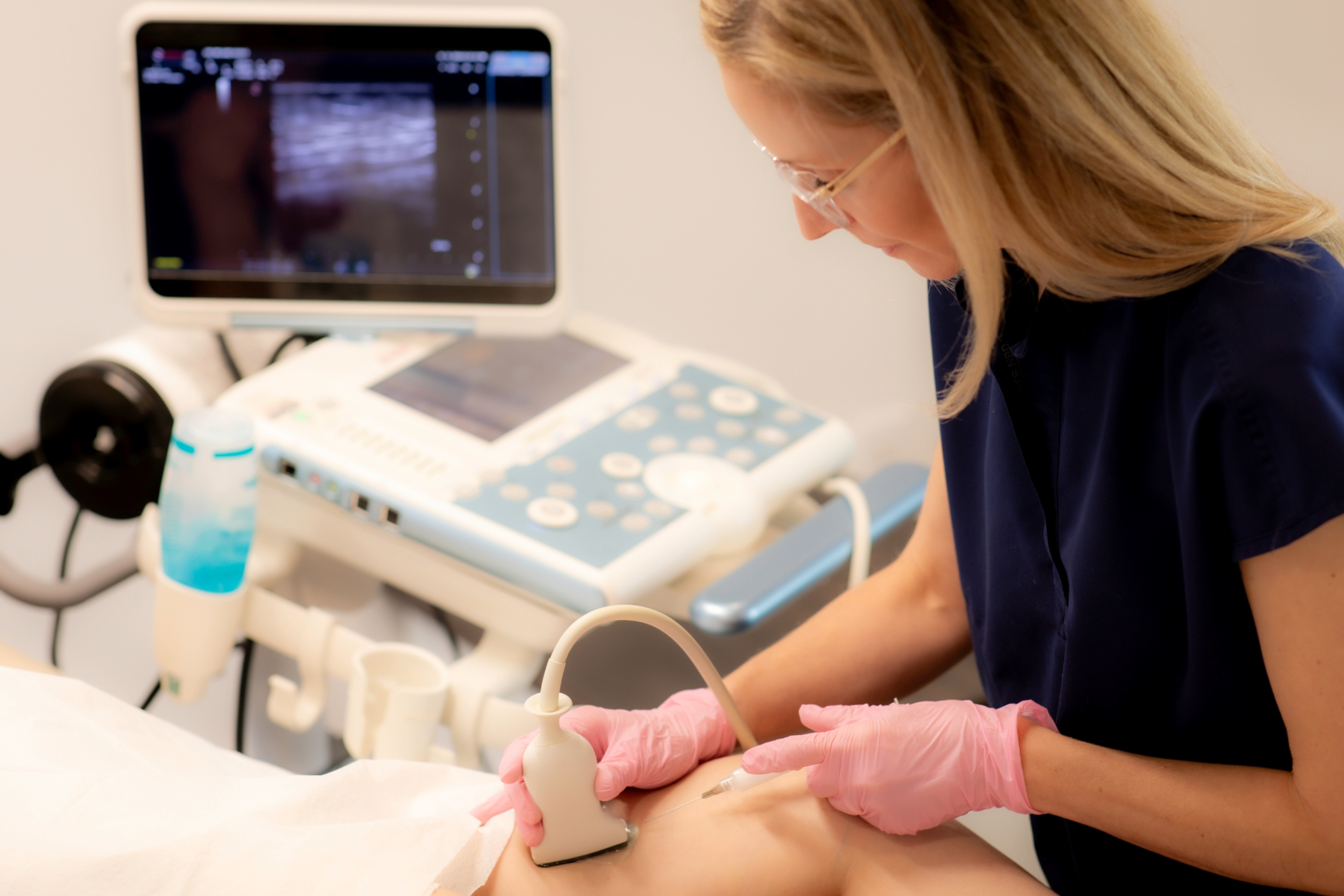Body Treatment
Sclerotherapy
Body Treatment
What is Sclerotherapy?

The Rejuvena Approach
How does a phlebology consultation work?
Review of your medical file
Photography
Discussion of your concerns
Ultrasound exam
Diagnosis
The steps to a sclerotherapy procedure:
Step 1:
Step 2:
Step 3:
Step 4:
Step 5:
A personalized approach
Why choose Clinique Rejuvena?
sclerotherapy
FAQ
The first consultation lasts about 30 minutes. Subsequent treatments last 20 to 30 minutes. The number of veins treated in any given treatment session depends on their size and location.
The number of treatment sessions depends on each patient. For the aesthetic treatment of spider veins, an average of 2 to 6 treatments is necessary. In some cases where the venous disease is more advanced, the number of sessions for adequate treatment will be higher. Venous insufficiency is a chronic condition. In order not to let the venous insufficiency worsen, we recommend an annual follow-up appointment.
Side effects are minor, such as redness and bruising at the injection sites, and usually disappear within 1 to 2 weeks after treatment. We will take the time to explain the possible effects of the treatment to you in detail during the first consultation. Patient education is one of our priorities.
No. After each treatment, we recommend walking for 20 to 30 minutes. You can then resume your regular activities.
Results are observable 2 to 6 weeks after treatment. Side effects usually go away during this period as well.
After each treatment, we recommend walking for 20 to 30 minutes. Wearing compression stockings is also recommended for a minimum of one week. Also, following the treatment, it is contraindicated to travel by plane or car (for extended periods) for about 3 weeks. Hot baths and sun exposure should also be avoided for about 2 weeks.
Compression stockings are low-elastic stockings that exert graduated compression on the legs, allowing the walls of the veins to come together and the valves to close. Venous return is therefore more effective and the legs are less heavy and less painful. Wearing medical compression stockings during the day is one of the best ways to delay the progression of venous insufficiency.